Need any help or advice?+44 (0)1782 454499
VIDEOS IN THIS SERIES
This video is part 2 of a 3 part series:PRODUCTS USED IN THIS PROJECT
Although not necessarily an exhaustive list, the following tools and materials, supplied by Easy Composites, were used in this project.
The quantity shown below is the approximate amount used in the project rounded up to the nearest available kit size or quantity.
MATERIALS & CONSUMABLES

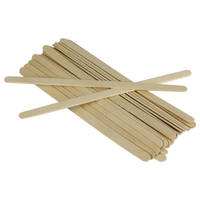
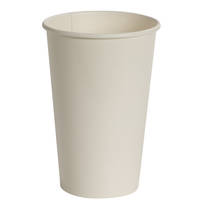
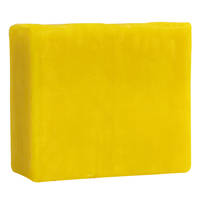
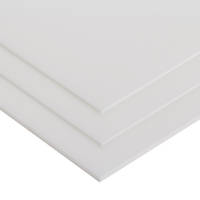
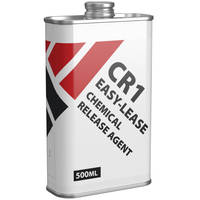
TOOLS & EQUIPMENT
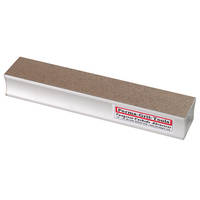
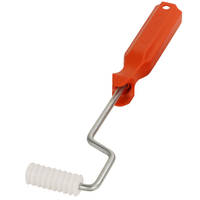
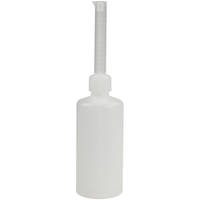
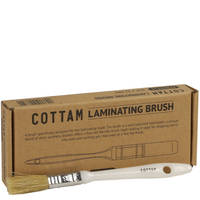
VIDEO TUTORIAL
How to Make Complex Split/Multi-Part Mould for Composites
Follow this step by step guide to take a composite pattern and create a precise, multi-part split-mould for fibreglass/GRP/FRP/composites.
If you want to make a copy of an existing part (or original design pattern) in a composite material such as fibreglass or carbon fibre then you will need to take moulds from the original part or pattern.
Sometimes, the shape of the part that you want to copy means that you can't make a simple one-piece mould and in this case you will need to make a multi-part 'split mould' which can be bolted together to lay-up the part and then unbolted and split apart to remove the part.
If you're not familiar with the techniques for making a multi-part mould then this process can be quite daunting but in this professional video tutorial we take you through the complete process, from start to finish, demonstrating the best practices for producing a multi-part split mould. In this video we create a 3-part split-mould for the airbox pattern that we made in our Composite Pattern Making Tutorial.
TUTORIAL BREAKDOWN
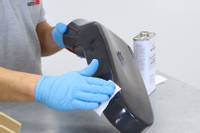
1. Mould release agents
Throughout the mould making process, there are many times when you will need to prepare your original parts or pattern with a 'release agent' to prevent the new mould materials from sticking to your part or indeed to the new flanges of other parts of the split-mould. Throughout this tutorial we use Easy-Lease Chemical Release Agent to ensure a reliable, easy release.
INTRODUCTION
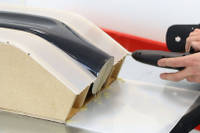
1. Working with temporary barriers
At various points during the mould making process we need to position temporary barriers around our pattern or part to create flanges on the mould sections and create any split-lines we need. Temporary barriers can be made using Fluted Sign Board (such as we did in Part 1 of our Carbon Fibre Bonnet Making Tutorial), or using a smoother, sturdier material such as the polypropylene sheet that we use throughout this tutorial.
Generally, when making split-moulds, temporary barriers are used to make the flanges for one part of the mould but are then removed once that part of the mould is cured so that the next part of the split-mould can utilise the new flange of the first part of the mould as a barrier to make its own flange. Doing so ensures that the different sections of the mould come together perfectly. When using the flange of a prior mould section as the barrier to make the flange of a new section it is of course very important to apply several applications of release agent (as though it were a new mould) to the flanges.
TUTORIAL BREAKDOWN

1. Using filleting wax
Filleting wax is used throughout the process to fill gaps between barriers and the part and to create softer radiuses where required. Filleting wax is also used to create 'registration dots' that are positions on barriers or flanges to create matching male and female lugs which will help to accurately locate different parts of the mould, ensuring they are perfectly aligned.
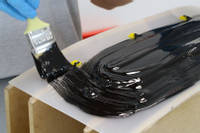
2. Uni-Mould mould making materials
In this tutorial, all three sections of the multi-part mould are made using our Uni-Mould Universal Mould Making System. Uni-Mould is a special tooling system that is compatible with the widest possible range of processes, will release reliably off most materials including polyester, vinylester and epoxy patterns and can then be used to produce parts using any of these resin systems.
We sell the Uni-Mould system in a complete starter kit including all the resins, catalyst, chopped strand glass and laminating tools or any of the individual parts can be purchased separately. For detailed information on using the Uni-Mould system please see our Uni-Mould Advantages and Laminating Guide PDF.
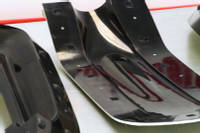
3. Use with prepregs
Although it is possible to use Uni-Mould moulds with out-of-autoclave (oven cure) prepregs (such as XPREG® XC110) we no longer recommend Uni-Mould moulds for this purpose.
Instead – for prepreg use – better results will be achieved using high temperature epoxy moulds made using our EG160 / EMP160 tooling system or XPREG® XT135 Tooling Prepreg. These high temperature epoxy tooling systems allow the prepreg to be cured at the optimum 120°C which reduces the cure time and improves the mechanical properties of the component. Additionally, epoxy tools have been found to result in a better surface finish with prepregs such as XPREG® XC110.
DISCUSSION (18)
Please share any questions or comments you may have about this video tutorial.
LEAVE A COMMENT OR QUESTION
PRODUCTS USED IN THIS PROJECT
Although not necessarily an exhaustive list, the following tools and materials, supplied by Easy Composites, were used in this project.
The quantity shown below is the approximate amount used in the project rounded up to the nearest available kit size or quantity.
MATERIALS & CONSUMABLES






TOOLS & EQUIPMENT




DISCUSSION (18)
Please share any questions or comments you may have about this video tutorial.
LEAVE A COMMENT OR QUESTION
100% SECURE
PAYMENT METHODS
Easy Composites EU B.V., registered in the Netherlands 73601195. All content copyright (C) Easy Composites Ltd, 2025. All rights reserved.